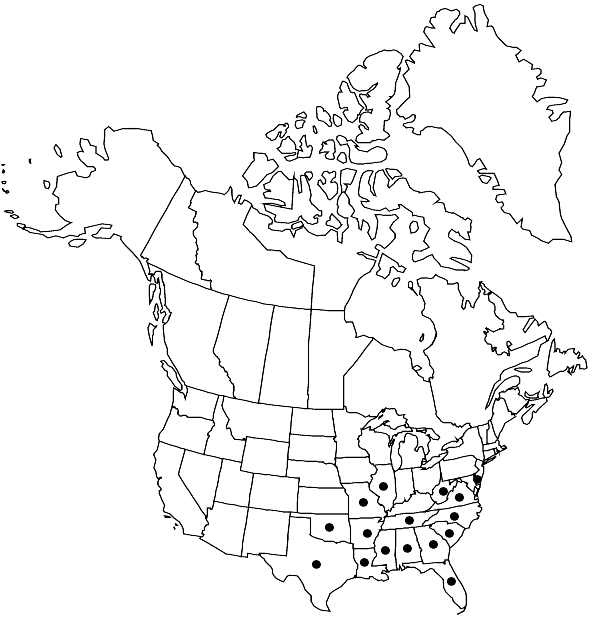Ptychomitrium drummondii
in A. Gray, Manual ed. 2, 636. 1856,.
Plants small, cespitose, dull, yellowish to dark green. Stems erect, to 0.5 cm. Leaves erect-appressed and straight or slightly flexuous when dry, broadly acuminate, 1.5–2 mm; margins mostly obscurely serrate distally, erect proximally; apex subcucullate. Specialized asexual reproduction absent. Seta 1 per perichaetium, 2–3 mm. Capsule ovoid, 0.75–1 mm, smooth to obscurely striate-ribbed when dry; peristome teeth undivided, papillose. Calyptra lobes one third to one half length of calyptra.
Phenology: Capsules mature Sep–May.
Habitat: Tree bark, rarely rock and soil, humid sites
Elevation: low to moderate elevations (0-300 m)
Distribution

Ala., Ark., Del., Fla., Ga., Ill., La., Miss., Mo., N.C., Okla., S.C., Tenn., Tex., Va., W.Va.
Discussion
The leaves of Ptychomitrium drummondii are erect-appressed and straight or only a little curved when dry and, together with the bark substrate, make this dull dark green little moss easy to recognize. Sporophytes are very frequent and abundant. In urban areas in the southeastern United States, P. drummondii is often frequent and abundant on trees in parks and campuses and along city streets.
Selected References
None.